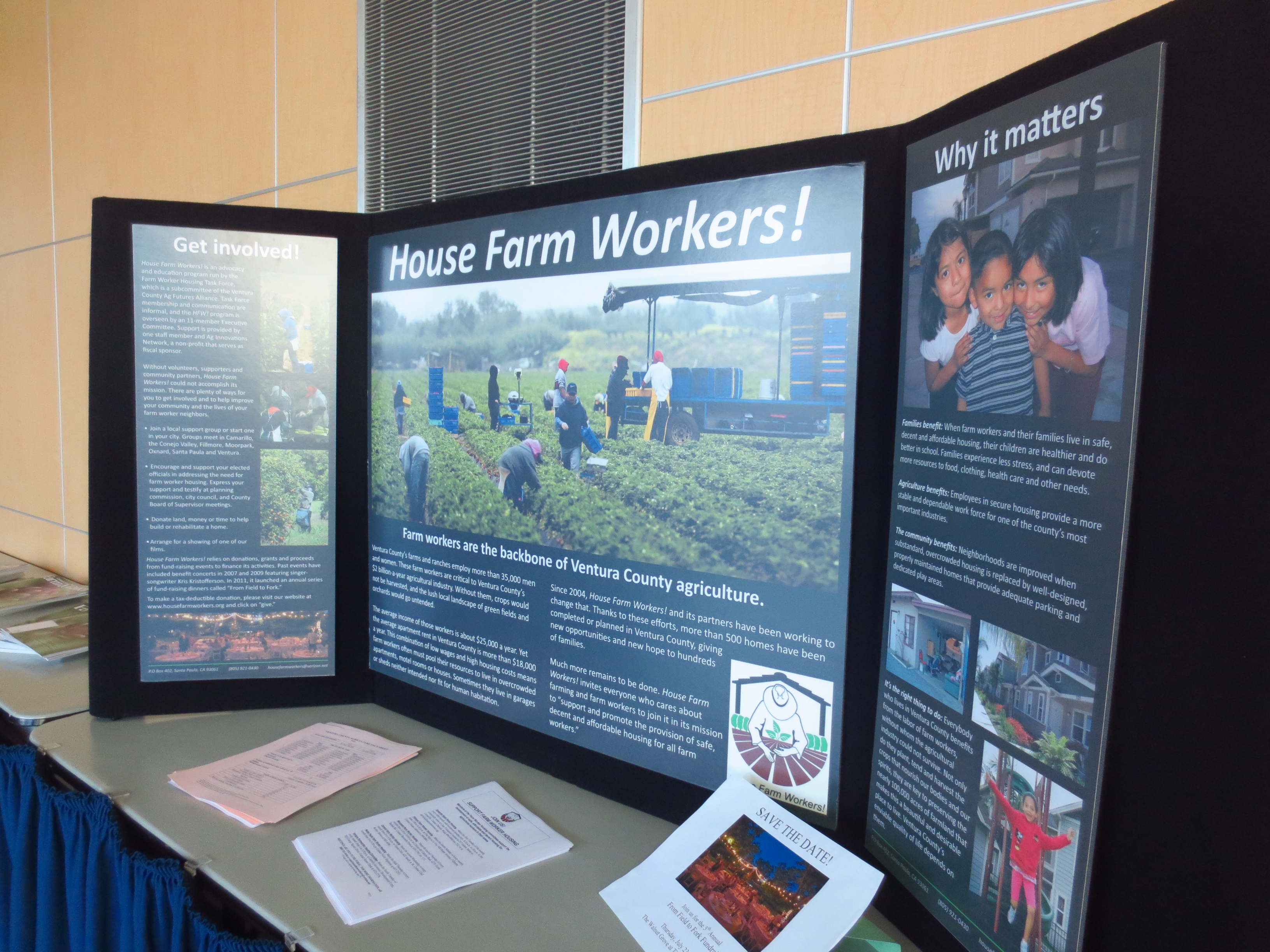
Farmworker living conditions is not a problem only in Ventura County. Santa Clara and Riverside counties also deal with high numbers of immigrant farmworkers who receive lower wages than are necessary for housing prices.
Santa Clarita
“Their living conditions are deplorable,” said Ann López, founder and director of the nonprofit Center for Farmworker Families, which is based in San Jose. “The rent is sky high. They live in houses with no heat that are crumbling, and people live in disgrace … It’s awful, especially when they hold up the entire food supply of the nation.”
López wrote a book called The Farmworkers’ Journey in 2007. She said the book addresses the treacherous and inhumane working and living conditions of immigrant farmworkers, as well as their vulnerability, their lack of healthcare and education, and how these issues are deeply intertwined.
López said, as far as she knows, “nothing has improved” since the book was published, and the border is even more treacherous now.
“This is all going on and everyone goes on with their lives as if nothing is happening,” she said.
Approximately 78 percent of farmworkers were born in Latin America, according to the National Agricultural Workers Survey.
And, according to the California Department of Food and Agriculture’s Agricultural Production Statistics, the 76,400 farms and ranches in California received $46.4 billion for their output in 2013. Yet, López said, the people who are holding it up do not receive adequate compensation.
“It’s been an absolute humanitarian disaster,” López said.
Riverside County
In Riverside County’s Coachella Valley, an agricultural region near Palm Springs, farmworker housing is often substandard or non-existent, Joe Colletti wrote in a 2006 report “The Coachella Valley Farm Worker Survey Final Report.” Colletti concluded that 2 percent of farmworkers surveyed reported having living situations not meant for human habitation, such as the outdoors, cars, trucks or vans parked in streets or parking lots, or inhabited converted garages. But this number increased to 30 percent among respondents who were migratory farmworkers in the same area.
Housing Authority for Riverside County Economic Development Agency Carrie Harmon said a report like this would ideally be done every three years, but “in the government world,” the same study is used until there is a major demographic change. The report was a $60,000 investment, she said, and when the Redevelopment Department was cut, the agency lost about $100 million to support housing structure. While there has been some “loose discussion” of the Department of Public Social Services commissioning a report, an updated report is unlikely anytime soon because the farmworker community receives few public benefits. But Harmon has been pushing to try to get funding for updated statistics.
“Affordable housing in Eastern Coachella Valley is the most dire housing need in Riverside County,” Harmon said. “They are living in extremely substandard housing, but if we’re not publicly able to supply affordable housing, the market does so on its own. If you only have $400 to rent and there’s nothing subsidized, you’ll get what you can afford.”
Harmon said this leads to problems with well water, septic tanks and sewage systems. It also limits the amount of pavement, which lets more dust into the air, causing asthma, especially among children.
“That housing is literally a stone’s throw away from the Coachella festival. (Imagine) that disparity,” Harmon said.
The Economic Development Agency still has a small amount of funding that they can allocate to affordable housing for these residents, such as the near-complete Hernandez Mobile Home Park, which will have six to eight mobile home units, Harmon said. They are also able to help some families purchase their own, re-furnished, subsidized mobile homes.
California Rural Legal Assistance Attorney Blaz Gutierrez at the CRLA’s Coachella office confirmed that the issue of substandard living conditions, particularly among immigrants, is still extremely relevant. As a representative of impoverished people throughout the county, including immigrants, he said the problem is both economic and racial. He said 75 percent of his work is considered impact litigation, meaning he represents large groups of marginalized people, such as immigrant farmworkers.
“We’re trying to address poverty,” Gutierrez said. “We assist poor people … You have to think about poverty before you can even touch the immigration issue.”
The CRLA does not provide services only to immigrants and cannot represent undocumented persons because they receive funding from the government. However, because of Coachella Valley’s proximity to the border and the frequency and number of resident migrants, many of the poor people CRLA represents in Coachella are immigrants, Gutierrez said.
Gutierrez said each CRLA office aims to meet the needs of its immediate area. In Coachella Valley, for example, “There’s an abundance of mobile home parks that are slums. They are inhabited by all kinds of immigrants — recent (immigrants), people who were born here but have an immigrant identity.”
Often times, this means impact litigation, or helping to advocate for adequate infrastructure, including sewers, septic tanks, electricity, roads and the condition of the trailers. Other times, the CRLA deals with management concerns, such as retaliation of landlords when tenants speak up for their rights, instituting new rules without prior notice, ignoring tenants’ requests for meetings or other similar issues.
Gutierrez said sometimes CRLA attorneys represent their clients through litigation, other times simply by making a phone call.
“It rarely goes to court, and if it does, (the tenants) normally don’t have any money,” Gutierrez said. “The other option is to negotiate.”
Gutierrez said the most tragic cases are the employee housing cases.
“There are large and small and in-between growers in Coachella Valley, and sometimes, there are ways that you can have something double zoned for agricultural and residential use,” he said. “They’re not large mobile home parks, but they’re a conglomeration and they’re usually not connected to a sewer system or a water system. They use wells or a porta potty. They don’t have paved roads. There’s pesticides and fertilizers in dust. They often don’t have mailboxes, so if you’re trying to correct your immigration status, that’s really tough.”
Other times, the CRLA handles smaller service cases, which involves negotiating about migrant farmworker housing.
“Sometimes they don’t have the ability to interface with landlords,” Gutierrez said.
Gutierrez said that in 1999 and 2000, in some unincorporated towns in eastern Coachella Valley that rely entirely on the jurisdiction of Riverside County, some CRLA clients began to notice that the county was trying to shut down certain poorer mobile home parks because of a few citizen complaints, while mobile home parks in other parts of the county in sometimes worse conditions were not being targeted in the same way.
Ultimately, the CRLA filed 30 complaints with HUD, which corroborated everything, Gutierrez said.
“It was concluded that the county’s practices of overzealous code enforcement would lead to actionable claims under Titles VI and VIII of the Civil Rights Act of 1964: You can’t discriminate against people. But the way the county was treating different parks, HUD was able to establish this pattern of discrimination.”
Yet instead of suing, Gutierrez said the 30 clients were instead willing to work out a deal that would improve their town, including the construction of affordable housing, more accessible health services and quality nonprofit housing for migrant farmworkers.
“It was more important to them to invest in the city than their own pocketbooks,” Gutierrez said.
The settlement agreement also led to the creation of a housing review committee for which government representatives meet up quarterly to hear complaints from tenants and landlords.
Gutierrez said while this and other incidents have demonstrated Riverside County’s attempts to correct problems, there is still apparent discrimination in access to transportation and distribution of county funds. However, he said, “There are definitely many improvements to talk about, even if they’re not happening as broadly and quickly as we would like.”
Another case was that of the Duroville slums on the Torres Martinez reservation in Coachella Valley.
“A lot of people got scared when the County (of Riverside) tried to shut parks down,” Gutierrez said. “People needed to find somewhere else to live. The reservation land was cheap and available and off the grid, so people moved on to tribal property.”
Duroville was the most notorious case, Gutierrez said, and it grew to 3,000 to 5,000 people.
“It was a slum,” he said. “You couldn’t tell the difference between there and ‘Slumdog Millionaire.’ There were wild dogs, a waste dump, no sewage or running water.”
The judge, “in a very unusual move,” visited the mobile home park during the litigation, and in his summary, he talked about the precedents of civil rights cases and made allusions to slavery, along with including his own firsthand observations, Gutierrez said.
Guild said that when she was in the Coachella Valley in 2013, she saw a trailer park similar to Duroville “that had really horrible conditions. After a lawsuit and a few other things, they tore down the entire trailer park and built a new park with nice streets, new trailer type houses, and open space for kids.”
Other States
Many other states with large farmworker populations face the struggle of providing housing for thousands of workers. Sara Quandt, professor of epidemiology and prevention at Wake Forest University, has authored more than 20 papers in relation to North Carolina farmworkers.
“In terms of stuff we have done in North Carolina, housing for farmworkers is incredibly varied, that is to say that there is some that is exemplary,” Quandt said. “Growers have constructed housing specifically for workers that is well-maintained, comfortable and safe. With that said, that kind of housing is rare. Most housing in NC, and I think this is the case in many places around the country, have camps. Migrant workers come and live in barracks and some specifically constructed for them a long time ago, rehabbed barns, people living in big rooms, then there is housing that is really old and finally trailers and mobile homes that are also often quite old.”
Most of this housing is crowded, dilapidated, dirty, and hard to clean, Quandt said.
Roberta “Bobbi” Ryder, president and CEO of the National Center for Farmworker Health, said that in Michigan, there were only three officials, who were out of the state, to ensure that occupants of farmworker housing during the months of cold weather had a way to heat the house and screens on the windows to keep out insects.
“The number of people you could put in the cabin was pretty amazing: two to six people in a cabin,” Ryder said. “The food preparation was a ledge on the side of the cabin held up with a brace with a Bunsen burner. They provided a big bag of beans and ice on the floor without anything in the refrigerator.”



